Hosta "Orange marmalade": description, planting, care and reproduction

Every gardener strives to grow a plant of an unusual beauty in his garden. Hosts in this regard have taken one of the leading positions. In appearance, they are multifaceted, therefore they are able to fit into any garden composition. The main decoration of any kind of host is very large and elegant leaves.

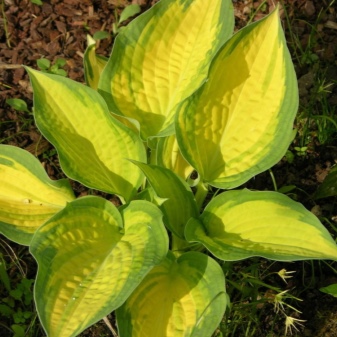
Description of Orange marmalade
Khosta, according to its agrotechnical properties, is considered the most versatile, drought and winter-resistant plant, moreover, it does not require special care skills. Even a beginner can grow such a bush in soda. This perennial plant can grow in one place for 20 years or more, becoming more magnificent and more beautiful every year. This is especially true for the Orange marmalade variety.

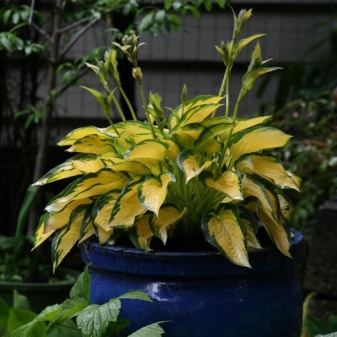
The advantage of this species is not only the large, slightly wrinkled oval foliage, but also the color of the leaves, which changes throughout the year. When blooming, the leaves have a golden yellow color, then acquire a bright orange tint., gradually fading to a creamy color under the influence of sunlight. The hosta blooms in July and early August with lavender inflorescences up to 1 m. The hosts belong to the genus Liliaceae, so the inflorescences have a rather strong aroma, which is greatly enhanced in cool weather.


Landing
Hosta is considered the most unpretentious plant. Even if you act on the principle of "dug a hole and planted", then a big trouble will not happen. It will take root and delight with its beauty. However, for maximum decorative effect, proper planting and maintenance are of paramount importance.
Before planting the Orange marmalade host in the garden, pay attention to the location and composition of the soil. The plant is considered the "queen of the shade", this variety requires more sun to obtain a variegated and bright color of the leaves. Choose a place where there is shade in the daytime, and the sun shines in the evening and morning. Also, the plant does not tolerate drafts and strong winds.
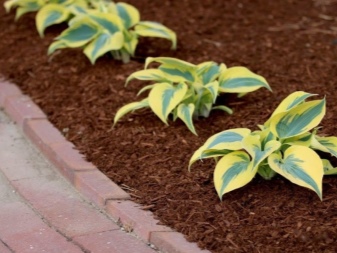

The hybrid hosta thrives on humus-rich and moist soils. For pH, neutral or very slightly acidic earth is suitable. Good drainage is essential. Before you start planting this plant, you need to prepare the soil in the fall. To begin with, fertilizers are applied on the selected site, and the earth is dug up. It is best to plant the host in April-May, when the threat of frost has passed.


You can also plant the plant from the second half of August to the first half of September. Later planting is impractical, since the host will not have time to take root and gain strength before winter... It is not necessary to pre-prepare the soil for such a planting; it is enough to water the soil abundantly and plant the host. The seedlings are planted several centimeters deeper than they grew before.

Before planting, the root system should be carefully examined. Dry, damaged and rotten parts must be removed. The roots are gently straightened, sprinkled with soil and watered abundantly. So that the soil does not dry out quickly, mulching is carried out with sawdust or dry grass. If a group planting is used, the seedlings are planted at a distance of up to 1 m. The bushes during growth will not interfere with each other, turning into spreading and lush bushes.
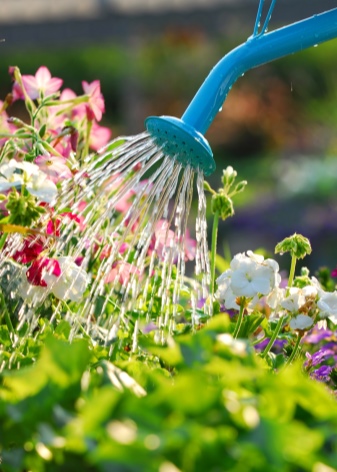

Care
What makes the host in the garden so convenient is that she does not need constant care. Adult plants with a well-developed root system tolerate drought well and can do without watering for quite a long time. What can not be said about young seedlings.However, to obtain a large and juicy decorative deciduous bush, watering should be infrequent, but abundant. The soil should be soaked over the entire root layer. The plant is watered with a small stream of water and only at the root. The water on the leaves attracts pests (snails, slugs), which greatly spoil the appearance of the bush.



Watering is carried out in the morning, if during the day, then only in cloudy weather. If water gets on the foliage, blot it with a cotton towel. Remaining water droplets can cause burns from the bright sun. What the host should not refuse is fertilization. Hosts are quite "gluttonous", reacts positively to feeding, responding to them with a quick set of deciduous mass and intensive growth. It can be either ready-made fertilizers or organic fertilizers in the form of mulch (compost, humus, cut grass, peat).

Until the seedlings grow well, you need to periodically weed from the weeds and gently loosen the soil around the bushes. By the 5th year, the plant will become quite sprawling, and this need will no longer be necessary. It is important and correct to prepare the bush for winter. All ground yellowed part of the hosta is completely removed. This manipulation allows you to remove pests hiding for the winter. Hosta perfectly tolerates even the most severe frosts. Therefore, special shelter is not needed. Foliage mulching can be used to preserve nutrients.

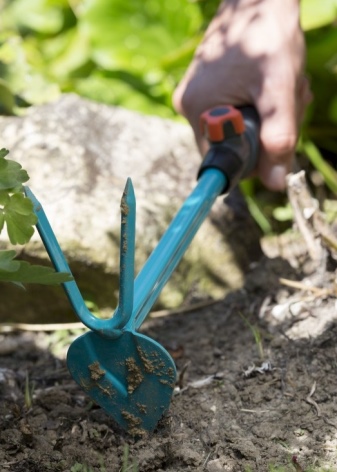
Reproduction
The most efficient way to propagate hosts is dividing the rhizome of the bush... For this, 4-year-old specimens are used. You can completely dig out the bush for dividing or take the right amount without damaging the mother plant. This procedure is carried out in early spring, when the leaves begin to grow, or at the beginning of autumn. The divisions are planted at a distance of up to 50 cm between them in a previously prepared soil and watered abundantly.
Cuttings - also an effective breeding method, but less popular. For this method, choose well-separated young shoots with a heel. Hosta Orange Jujube has large foliage that needs to be cut in half. So the cutting will lose less moisture. Such planting material is planted in partial shade and watered well before rooting.

How to properly care for the host, see the video.







































































































The comment was sent successfully.